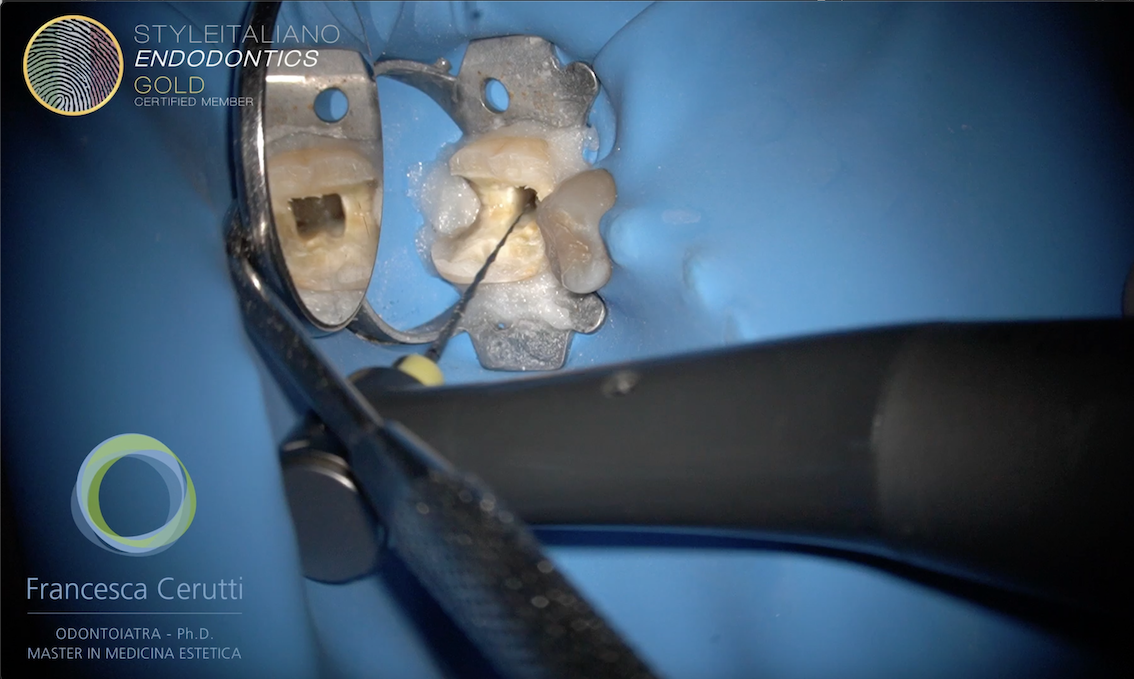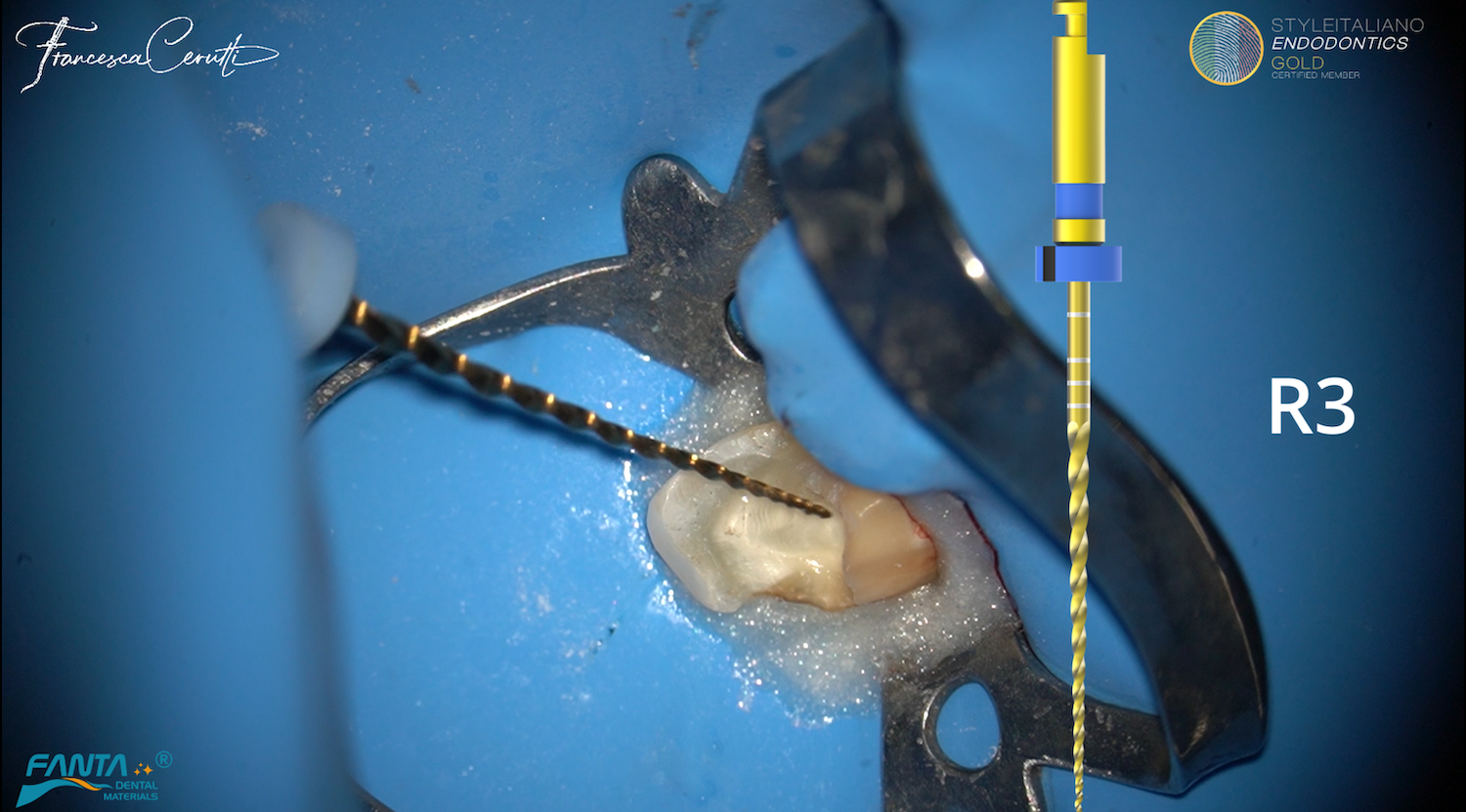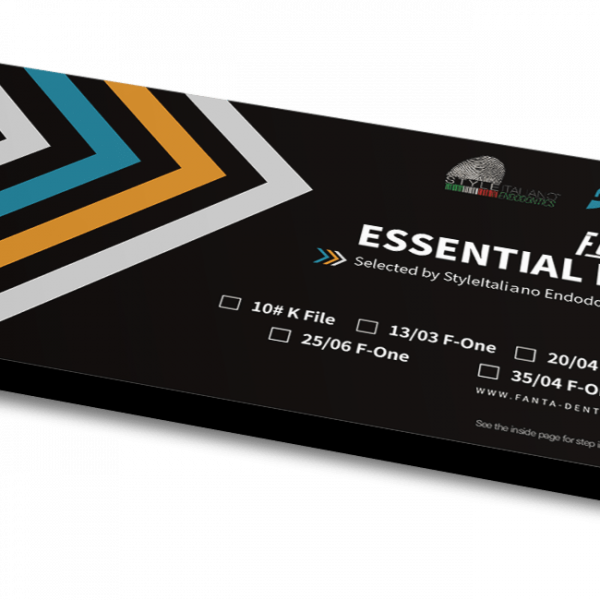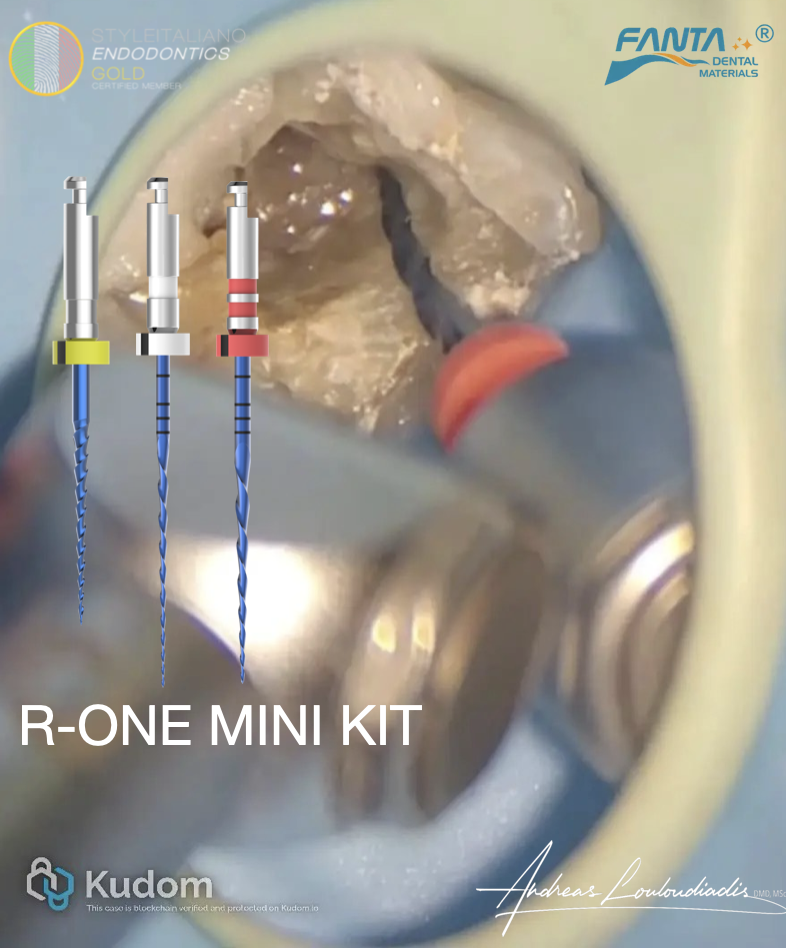
"Small Kit, Big Impact: Enhancing endodontic outcome with the R-One Mini Kit by Fanta".
19/05/2025
Andreas Louloudiadis
Warning: Undefined variable $post in /var/www/vhosts/styleitaliano-endodontics.org/endodontics.styleitaliano.org/wp-content/plugins/oxygen/component-framework/components/classes/code-block.class.php(133) : eval()'d code on line 2
Warning: Attempt to read property "ID" on null in /var/www/vhosts/styleitaliano-endodontics.org/endodontics.styleitaliano.org/wp-content/plugins/oxygen/component-framework/components/classes/code-block.class.php(133) : eval()'d code on line 2
One of the main goals of the endodontic treatment is to perform a proper shaping and cleaning of the root canal system in order to achieve a successful outcome. Pulp canal calcification occurs due to the deposition of calcified tissue in the canal walls. The root canal space can be partially or completely obliterated. In this context, endodontic treatments of severely calcified teeth are considered incredibly difficult and complex. Therefore, assessment of the anatomy pulp chamber and root complex s a priority for negotiating calcified canals. Locating, establishing, and securing the glide path is the most challenging part of instrumentation in calcified root canals.
Fanta has introduced into the market a new sequence of files, called R-One Mini, aiming to simplify the endodontic management of all types of root canals. The R-One Mini rotary files by Fanta Dental are engineered for efficient and safe root canal treatments, particularly in narrow or curved canals. These files are designed to enhance cutting efficiency while preserving tooth structure. With its variable tapered, which is thinner in the coronal part, and its cross-sectional anatomical design the kit allows for Minimal Invansive Shaping while its passive tip avoids the possibility of perforations.
The files feature an S-shaped cross-sectional design, which increases cutting efficiency and facilitates debris removal. This design allows for effective shaping of the canal while minimizing stress on the file.
Manufactured with advanced thermal treatment processes, the R-One Mini files features a hybrid heat treatment offering improved flexibility, making them suitable for navigating curved canals. The inactive tip design reduces the risk of canal transportation and ledging.
The files are designed to preserve pericervical dentin, reducing the risk of vertical root fractures and maintaining the structural integrity of the tooth.
Finally, the reciprocating motion of the R-One Mini files simplifies the instrumentation process, making them user-friendly for clinicians.
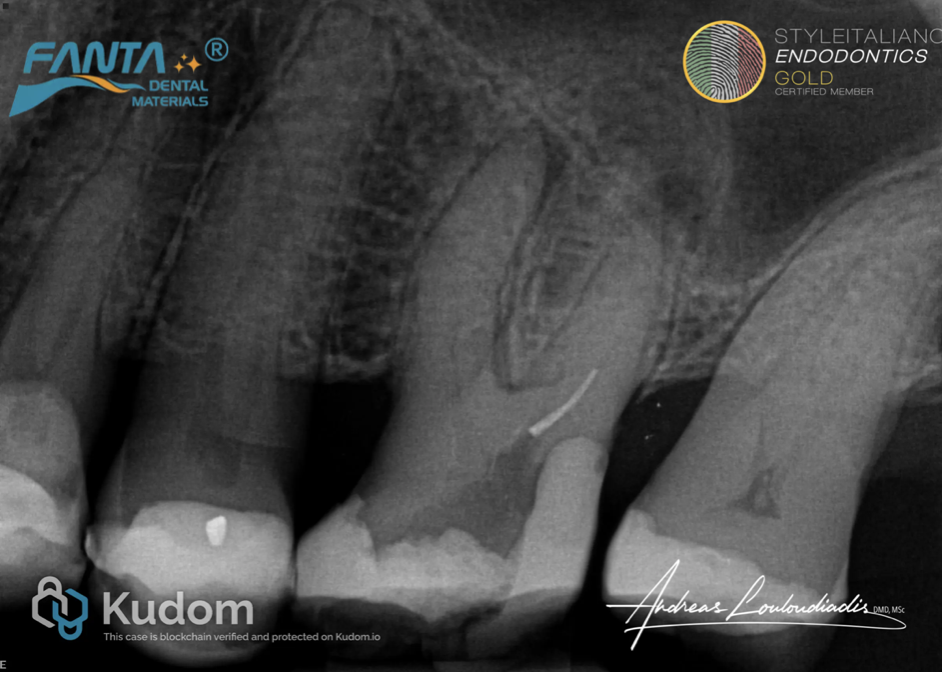
Fig. 1
Tooth #26
Diagnosis of Previously initiated and Symptomatic Apical Periodontitis was established for the first maxillary molar on a 76 years old male patient with clear medical history.
The pre-op radiograph indicated a challenging calcified anatomy on all canals with periapical pathology associated with all of them, and a separated instrument on the db canal that required extra attention.
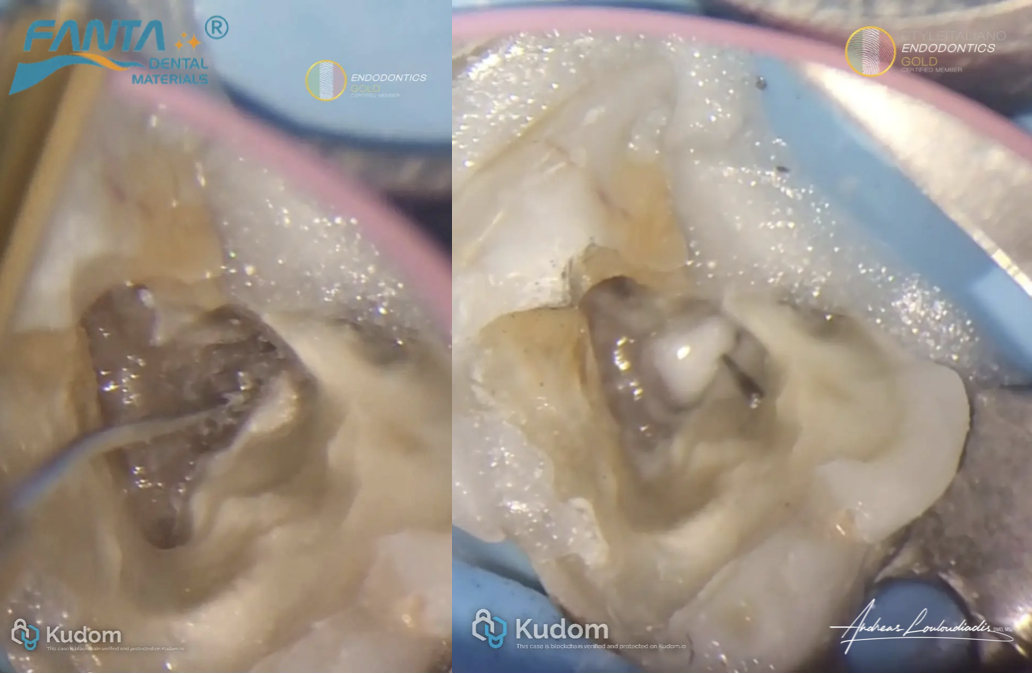
Fig. 2
An ultrasonic tip was used from the inner wall side to vibrate the fragment until it got loose and jumped out of the canal.
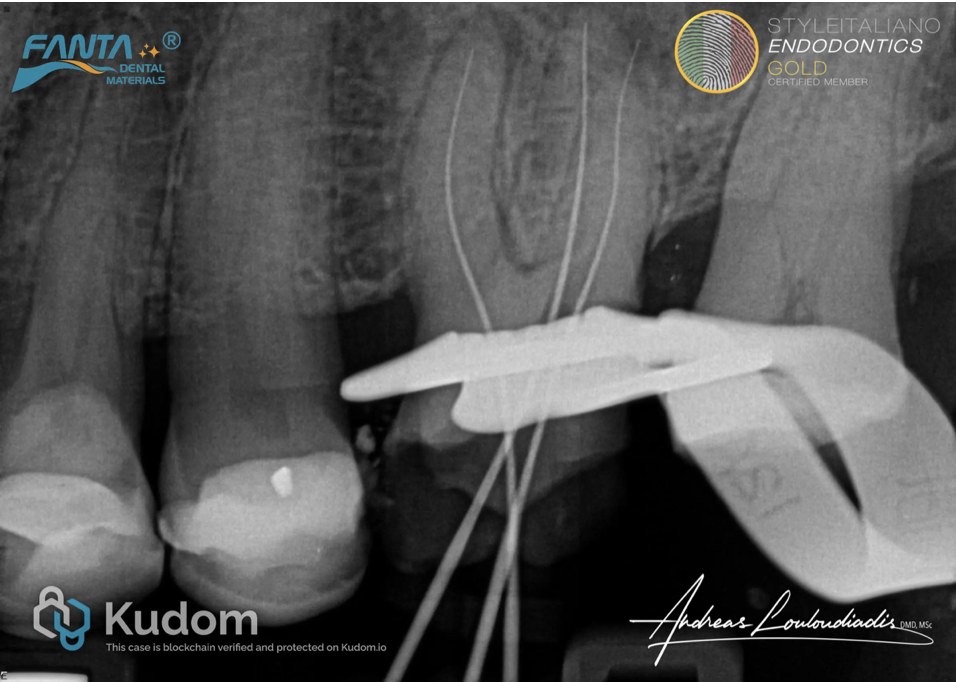
Fig. 3
WL Determination.
Despite troughing with US under microscope, no mb2 was identified.
After removing the existing fractured file all canals were identified and WL was determined.
As you can see the files work smoothly and efficiently inside the canals exhibiting good cutting efficiency , flexibility and optimal removal of debris.
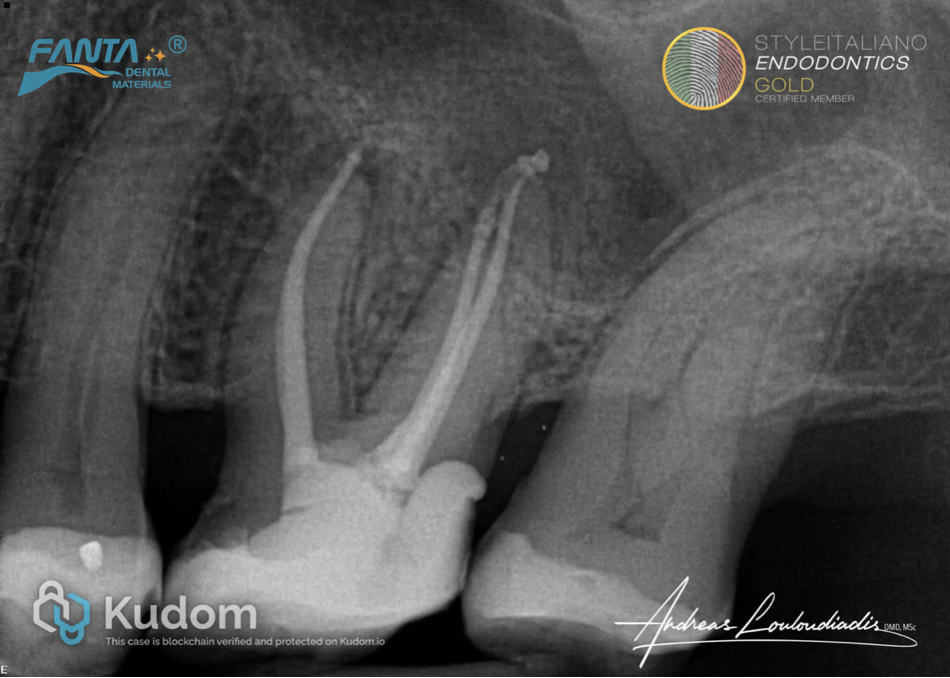
Fig. 4
Post - Operative radiograph.
Obturation performed with BC sealer and Cold Hydraulic Condensation.
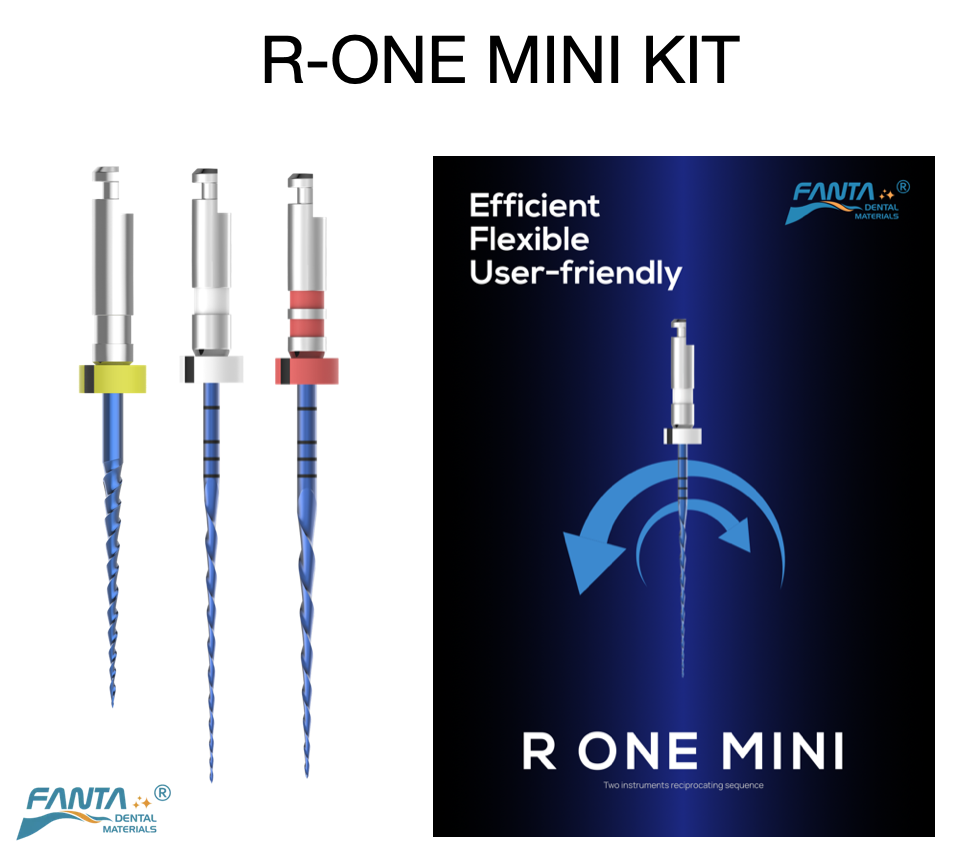
Fig. 5
R-one Mini Kit Sequence system.
19/05 : This file is called an Early Flarer- 0.19 tip and 0.5 variable taper with the same diameter coronal as the last file of the sequence and it is used in Continuous rotation at slow speed of 250 Rpm.
17/04 : This is the Glide path file 0.17 tip and 0.4 variable taper design. It is made of AF-L wire alloy making it less flexible that the 25/06 in order to progress nicely and smoothly into the calcified canal, preparing the canal for the finishing file.
25/06- The last file of the sequence, the finishing file, which is also of variable taper 0.6 and 0.25 tip. It is made of AF-R wire alloy to increase flexibility and flexural resistance. The 25/06 completes the preparation of the canal in a minimal invasive way preserving the valuable pericervical dentin due to its thiner coronal diameter.
Conclusions
The R-One Mini Kit by Fanta demonstrated excellent clinical performance, combining flexibility, cutting efficiency, and tactile control. Its design supports minimally invasive shaping while maintaining the original canal anatomy, making it particularly suitable for complex or curved root canals. The simplified instrumentation sequence contributed to procedural efficiency and predictable outcomes. This case supports the R-One Mini Kit as a valuable tool for modern, conservative endodontic treatment.
Bibliography
1.Serracchiani M, Miccoli G, Di Nardo D, Zanza A, Cantore M, Gambarini G, Testarelli L. Effect of flexural stress on Torsional resistance of NiTi Instruments. J Endod 2021 Mar;47(3): 472-476
2. Akkoc Halil I, Keskin C, Aslants K. Dynamic analysis of a Niti rotary file by using finite element analysis: effect of cross-section and pitch length. Aust Endod J 2024; 50(3): 649-657
3.Nasiri K, Wrbas K-T. Management of calcified root canal during root canal therapy. J Dent Science 2023;18:1931-32
4. Yared G. Canal preparation using only one NiTi Rotary instrument: Preliminary observations. Int Endod J 2008 Apr;41(4):339-344.


